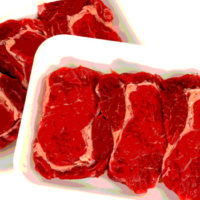SQF Edition 8: Focus on Hygiene and Sanitation

Food-related outbreaks and recalls due to poor sanitation and hygiene standards prevailing in the food industry is not an uncommon occurrence around the globe, including the United States. According to the U.S. Centers for Disease Control and Prevention, every year there are about 48 million foodborne illnesses, 128,000 hospitalizations, and 3,000 deaths due to consumption of contaminated food. These incidences result into annual losses of over $15.6 billion dollars to the economy. Moreover, about one in four of the food safety recalls in the U.S. relate to poor environmental hygiene and sanitation controls, and, if food facilities were to implement appropriate improvements, it could translate into an actual savings of $0.5–1.5 million annually per company. Establishing such food safety controls usually requires food facilities to develop, implement, and maintain a food safety management system, and the SQF Codes can provide a sound basis for developing such a system.
The SQF Code Edition 8 Food Safety Code for Manufacturing has provided the requirements for environmental hygiene and sanitation controls for the food and beverage industry, at least in the following areas (note: technical elements for Module 11 are referenced in the following points):
 1. The Concept of Hygienic Design
1. The Concept of Hygienic Design
Element 11.2.9.3 of the SQF Food Safety Code for Manufacturing states that “benches, tables, conveyors, mixers, mincers, graders, and other mechanical processing equipment shall be hygienically designed and located for appropriate cleaning.”
Hygienically designed surfaces generally have the following quality features: cleanable to a safe microbiological level; made of compatible (corrosion-resistant, nontoxic, nonabsorbent) material; areaccessible for inspection, maintenance, cleaning, and sanitation; allow for no product or fluid collection; have hollow areas that are hermetically sealed; have no niches like cracks, seams, gaps, etc.; exhibit sanitary operational performance; have valves, switches, and other maintenance enclosures designed to prevent any harborage points; have hygienic compatibility with other systems such as the water pipe supply, etc.; and require a validated cleaning protocol for each piece of processing equipment.
Hygienically designed equipment is quicker and easier to clean, and minimizes the risk of product contamination by microorganisms, allergens, foreign material, etc. This in turn maximizes food safety and quality, reduces the risk of an expensive product rejection or recall, and minimizes food waste.
However, when it comes to the implements used to clean food production equipment, very few of these cleaning tools are developed with good hygienic design in mind. Cleaning equipment can be a major collection point for pathogens. Therefore, cleaning implements of poor design could jeopardize food safety and quality. Vikan’s Ultra Safe Technology (UST) brushes and brooms can provide a facility with a superior hygienic cleaning solution. For more information, download our white paper at www.remcoproducts.com/ust-white-paper.
 2. Verified and Validated Cleaning Processes
2. Verified and Validated Cleaning Processes
Element 11.2.13 requires sites to develop reliable cleaning and sanitation methods, so it does not pose a chemical contamination risk to raw materials, ingredients, or product.
A well-written cleaning program must also include provisions for effective cleaning of equipment, facilities, utensils, amenities, and external areas. Such a methodic program must be verified to ensure its effectiveness in terms of removing biological, chemical, and/or physical contaminants from equipment.
Moreover, any modifications to the equipment means that cleaning processes must be re-validated. In the case of a cleaning implement such as a scrubbing brush, this may involve development of a consistently effective and appropriate method of decontaminating the cleaning tool. For more information, download our white paper at remcoproducts.com/cleaning-tool-maintenance/.
.jpg) 3. Care, Maintenance, and Assurance of Sanitary Performance of Equipment
3. Care, Maintenance, and Assurance of Sanitary Performance of Equipment
Element 11.2.9 requires the site to document appropriate specifications of equipment and utensils. Equipment must be designed, constructed, installed, operated, and maintained to meet applicable regulatory requirements and not pose a contamination threat to the product. Furthermore, they must be cleaned after use or at a frequency to control contamination and be stored in a clean and serviceable condition to prevent microbiological contamination or allergen cross-contact. As a recommendation, there should also be scheduled care and maintenance plan for the cleaning tools because they may be a potential source of food contamination.
For more information, download our white paper at remcoproducts.com/white-paper-selection-care-and-maintenance-guide/.
4. Significance of Sanitary Zones and Environmental Monitoring
The purpose of creating sanitary zones is to ensure separation of functions critical to food safety to prevent direct contamination, cross contact, and cross-contamination incidents. The requirements are provided in section 11.7, which provides guidance on the following:
11.7.1 Process Flow
11.7.2 Receipt of Raw and Packaging Materials and Ingredients
11.7.3 Thawing of Food
11.7.4 High-Risk Processes
11.7.5 Control of Foreign Material Contamination
11.7.6 Detection of Foreign Objects
11.7.7 Managing Foreign Matter Contamination Incidents
Proper placement of zones improves capability of environmental monitoring necessary to verify whether sanitary conditions are maintained on-site. Such zoning can best be supported by a well developed and implemented color-coding program.
For more information, download our white paper at remcoproducts.com/white-paper-making-the-decision-to-apply-color-coding/.
Looking for a reprint of this article?
From high-res PDFs to custom plaques, order your copy today!





